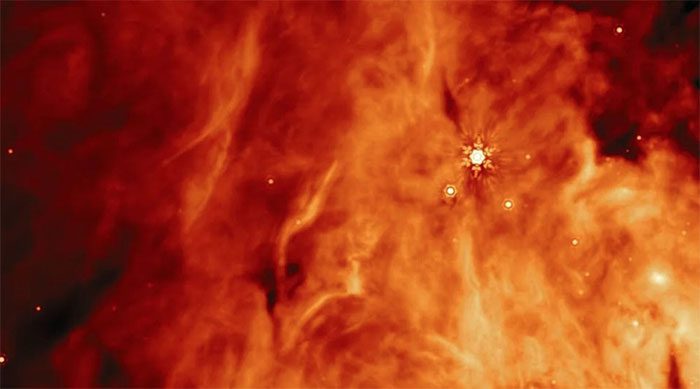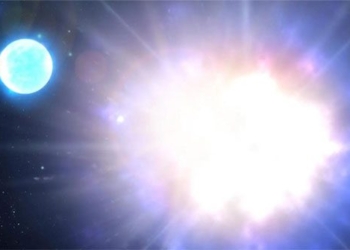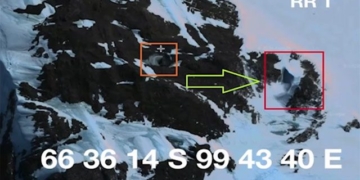The discovery of complex organic molecules by the James Webb Space Telescope may reveal how habitable planets can form.
Astronomers using the James Webb Space Telescope have found complex organic molecules around two forming stars. These molecules are essential for life, yet their origins in space remain a mystery, according to Will Rocha, the lead researcher and an astronomer at Leiden University in the Netherlands. The new study indicates that these complex molecules appear during the sublimation process of ice from solid to gas.
“This discovery helps answer one of the long-standing questions in astrochemistry: How do complex organic molecules originate in the universe? Are they created during the gas phase or do they exist within ice blocks? The discovery of complex organic molecules in ice suggests that chemical reactions during the solid phase on the surface of cold dust grains can produce complex molecular types.”

Image Credit: NASA, ESA, CSA, Leah Hustak (STScI)
Rocha and his research team utilized the Mid-Infrared Instrument of the James Webb Space Telescope to observe materials surrounding two protostars, IRAS 2A and IRAS 23385. IRAS 2A particularly piqued the team’s interest as it closely resembles the first stars during the early solar system phase.
In the cold dust surrounding these early-stage stars, researchers found icy compounds containing ethanol, acetic acid, formic acid, methane, formaldehyde, and sulfur dioxide.
Some complex organic molecules found in ice were also detected in the warm gas layers around the forming stars. According to the researchers, this discovery indicates that these compounds are the result of a direct transition from solid to gas without passing through a liquid phase—a process known as sublimation.
The finding of complex organic molecules in ice also suggests that these molecules may have traveled through galaxies more easily than previously thought. An icy molecule can easily be swept into a forming comet or asteroid, traveling vast distances and then colliding with forming planets, thereby delivering the building blocks of life to these locations.
“All of these molecules could become part of a comet or asteroid, or even a new planetary system when the icy compounds are incorporated into the protoplanetary disk as protostellar systems evolve,” said co-author Ewine van Dishoeck, also from Leiden University.





















































